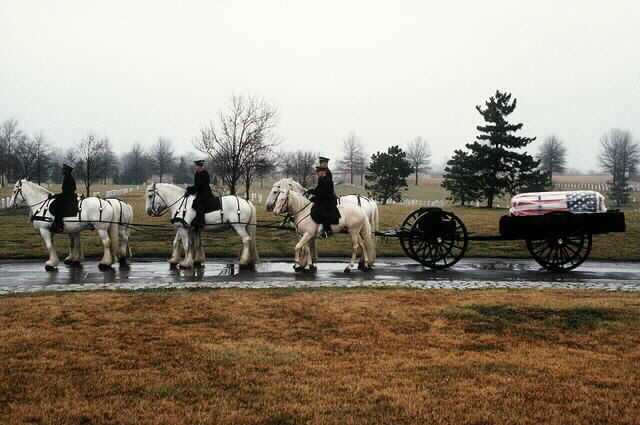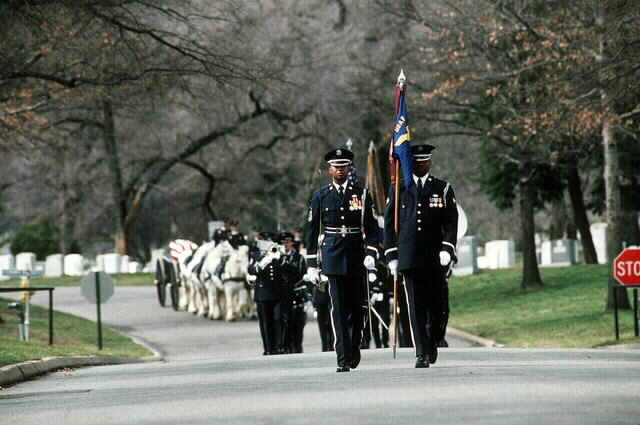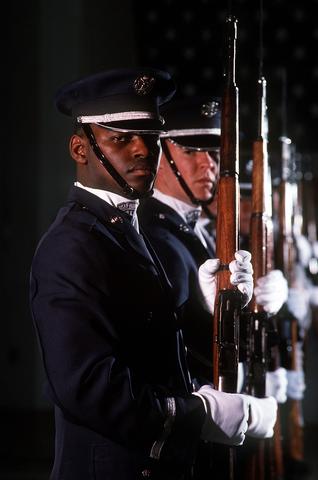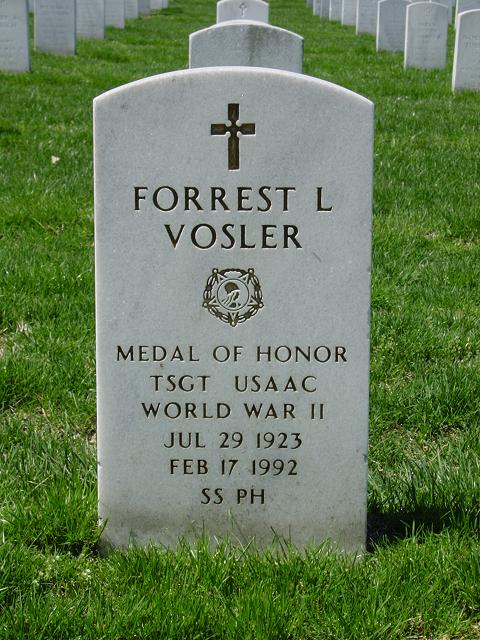Medal of Honor. Rank-Organization: Technical Sergeant, Army Air Corps, 303rd Bomber Group. Place-Date: Over Bremen, Germany, 20 December 1943. Entered Service: Rochester, New York. Birth: 29 July 1923, Lyndonville, New York. GO 73, 6 September 1944.
A World War II Medal of Honor recipient, has been buried at Arlington National Cemetery with an Air Force full-honors ceremony. Forrest Lee Vosler was 69 years old. In addition to being one of select group to have earned Medal of Honor, he was member of an even smaller group of five Air Force enlisted men ever to have earned the Medal of Honor. Eight other Medal of Honor recipients attended the funeral.
He was a US Army Air Corps radio operator and gunner at the time he earned Medal, December 20, 1943. Assigned to 358th Bomber Squadron, 303rd Bomber Group, 20- year-old, a staff Sergeant at the time, he was cited for conspicuous gallantry in action against the enemy, “above and beyond the call of duty,” for a series of actions during bombing mission over Bremen, Germany.
According to the citation, his heavy bomber was returning from the mission when it was hit and severely damaged by enemy antiaircraft fire. His craft was forced out of the formation which had afforded it the greatest degree of protection from enemy fighters. The bomber was immediately subjected to repeated vicious attacks by enemy fighters. Vosler was wounded in the legs and thighs early in the engagement when a 20-millimeter cannon shell exploded in radio compartment. The aircraft was also hit in tail section, and the tail gunner was seriously wounded. With the gunner unable to operate the tail gun, enemy fighters would have been able to attack the bomber from the rear with impunity. He realized the vulnerability of the tail of the ship and moved back to operate the gun, “keeping up a steady stream of deadly fire.”
Shortly thereafter, another 20-mm shell exploded, wounding him in the chest and face. “Pieces of metal lodged in both eyes, impairing his vision to such an extent that he could only distinguish blurred shapes,” the citation continued. Declining to be treated while the ship was still under attack, Vosler continued firing at those indistinct shapes. With the plane having trouble staying airborne, it was reported, he volunteered to be thrown from the plane to lighten the load – a suggestion that was rejected.
Later he returned to his radios, which had been put out of operation during the attack. The pilot, also wounded in the attack, was preparing to ditch in the sea. Vosler, using only his sense of touch because he was unable to see, finally got his radios working enough to send out a distress signal, despite the fact he was passing in and out of consciousness. After the ship ditched, Vosler managed to get out onto the wing under his own power “and held the wounded tail gunner from slipping off (the wing) until the other crewmembers could help them into the dinghy.”
He is buried in Section 60, Grave 4924, Arlington National Cemetery.
VOSLER, FORREST L. (Air Mission)
Rank and organization: Technical Sergeant, U.S. Army Air Corps. 358th Bomber Squadron, 303d Bomber Group. Place and date. Over Bremen, Germany, 20 December 1943. Entered service at: Rochester, New York. Born: 29 July 1923, Lyndonville, New York. G.O. No.: 73, 6 September 1944.
Citation:
For conspicuous gallantry in action against the enemy above and beyond the call of duty while serving as a radio operator-air gunner on a heavy bombardment aircraft in a mission over Bremen, Germany, on 20 December 1943. After bombing the target, the aircraft in which T/Sgt. Vosler was serving was severely damaged by antiaircraft fire, forced out of formation, and immediately subjected to repeated vicious attacks by enemy fighters. Early in the engagement a 20-mm. cannon shell exploded in the radio compartment, painfully wounding T/Sgt. Vosler in the legs and thighs. At about the same time a direct hit on the tail of the ship seriously wounded the tail gunner and rendered the tail guns inoperative. Realizing the great need for firepower in protecting the vulnerable tail of the ship, T/Sgt. Vosler, with grim determination, kept up a steady stream of deadly fire. Shortly thereafter another 20-mm. enemy shell exploded, wounding T/Sgt. Vosler in the chest and about the face. Pieces of metal lodged in both eyes, impairing his vision to such an extent that he could only distinguish blurred shapes. Displaying remarkable tenacity and courage, he kept firing his guns and declined to take first-aid treatment. The radio equipment had been rendered inoperative during the battle, and when the pilot announced that he would have to ditch, although unable to see and working entirely by touch, T/Sgt. Vosler finally got the set operating and sent out distress signals despite several lapses into unconsciousness. When the ship ditched, T/Sgt. Vosler managed to get out on the wing by himself and hold the wounded tail gunner from slipping off until the other crewmembers could help them into the dinghy. T/Sgt. Vosler's actions on this occasion were an inspiration to all serving with him. The extraordinary courage, coolness, and skill he displayed in the face of great odds, when handicapped by injuries that would have incapacitated the average crewmember, were outstanding.
Photos Courtesy of the Defense Department
Michael Robert Patterson was born in Arlington and is the son of a former officer of the US Army. So it was no wonder that sooner or later his interests drew him to American history and especially to American military history. Many of his articles can be found on renowned portals like the New York Times, Washingtonpost or Wikipedia.
Reviewed by: Michael Howard




